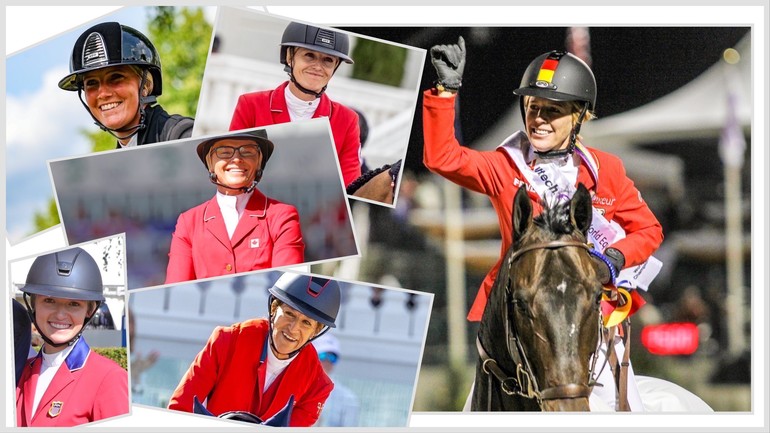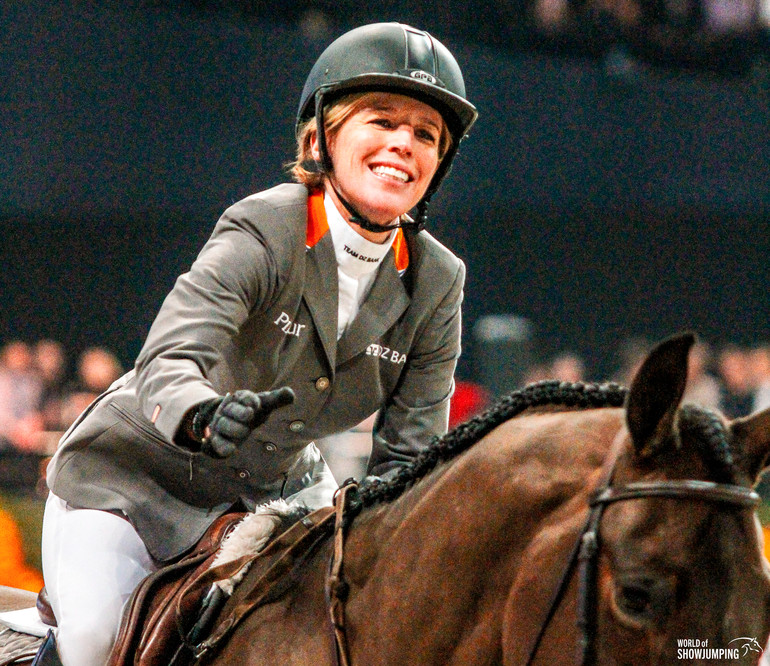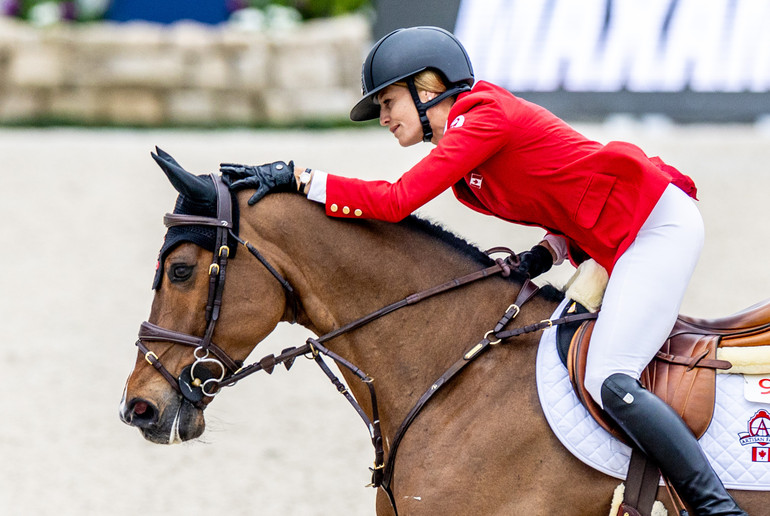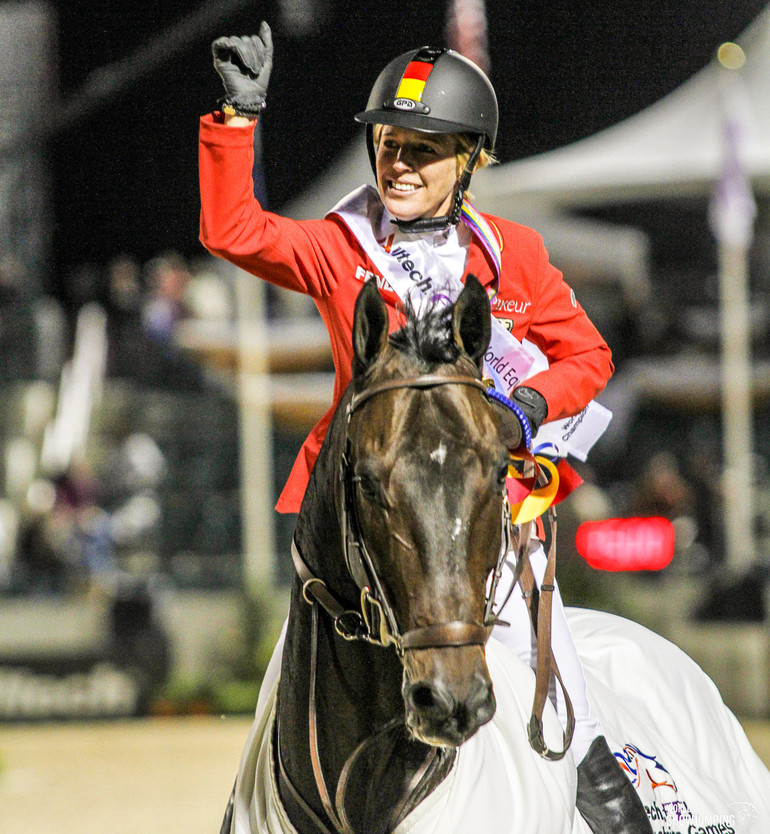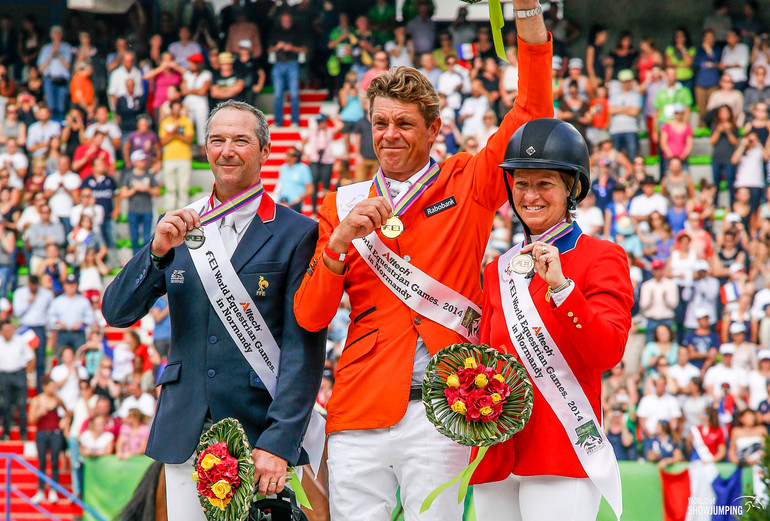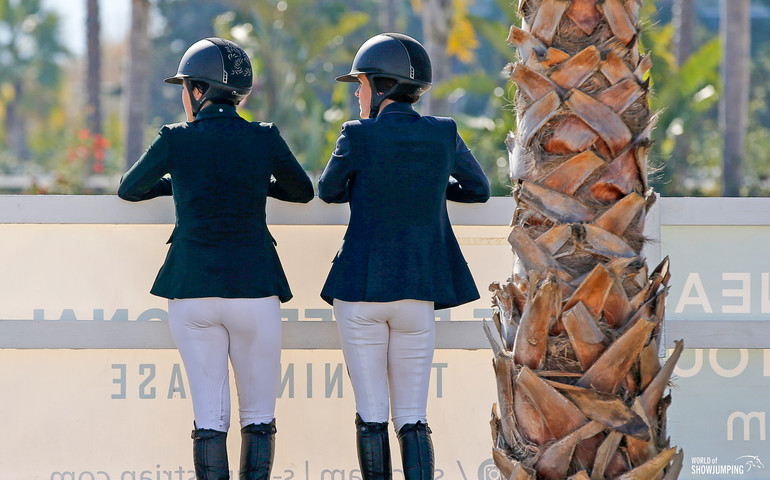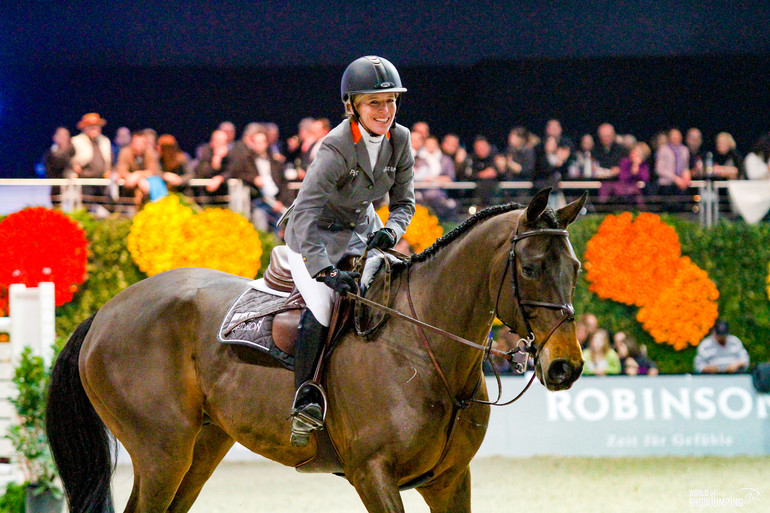Text © World of Showjumping
“If you would give these numbers to someone who has nothing to do with equestrian sports, you could say that men definitely control the sport when it comes to the world ranking. It's clear; the numbers say it,” Meredith Michaels-Beerbaum – the only woman to ever have been ranked as the world number one in showjumping – reflects on the fact that currently there are only 17 female riders within the top 100 on the jumping world ranking. [i]
The list for the world ranking in jumping – officially named the Longines Rankings – is produced by the FEI Headquarters, while the formula belongs to the International Jumping Riders Club (IJRC).
“It's sort of remarkable that there are so few women at the top of the Longines Rankings. I was once just a little American girl, a 21-year-old who moved to Europe and became number one in the world riding for Germany. So why was I able to do it? I think it's a fascinating question and one that should be asked,” Michaels-Beerbaum says.
Where is the link broken?
The fact that men and women compete as equals is one of the unique aspects of equestrian sports. However, the numbers at the top of the current Longines Rankings – the world ranking list for jumping riders – do not reflect this. While the numbers are more levelled on the FEI Jumping U25 Ranking, with over 50% of the current top 100 being females, the percentages shift from a representation of over 50% to under 20% on the Longines Rankings.
While the world ranking only speaks for the current situation, women have historically been underrepresented on the podiums at major championships too. Between 1964 and 2024, only five women have won individual medals at the Olympic Games in the discipline of jumping. During the same time frame, female riders have won 24 team medals. [ii] Interestingly, nine of those women have been Americans. “In the US, there are more women competing than there are in Europe,” Michaels-Beerbaum points out. “If you look at the USEF ranking list compared to the international ranking list, all of a sudden, you see a major shift. Why is that?”
We have so many talented women in the sport and it's not like we're not good enough
- Meredith Michaels-Beerbaum -
On the latest Rolex U.S. Show Jumping Rankings – which has a more complex formula than the Longines Rankings, taking into consideration the starting field and actual level of each class – women are the dominating gender, represented with over 70% in the top 100. “In the US, there are shows that run consecutive weeks at the same venues, with classes from lead-line to five-star running alongside each other,” Michaels-Beerbaum points out. “Maybe that enables the women to compete more?”
Looking at the European Championships in jumping held between 1985 and 2024, only five female riders have won individual medals, while 28 team medals have been won by women. [iii] At the World Championships held between 1978 and 2024, only five individual medals in jumping have been won by female riders, while 26 team medals have been won by women. [iv]
Three female riders have contributed greatly to these medals. Meredith Michaels-Beerbaum has won ten championship medals at the Olympic Games, World Championships and European Championships, Beezie Madden has won four medals at the Olympic Games and four at the World Championships – and also has six medals from the Pan American Games, while Malin Baryard-Johnsson has seven medals from the Olympic Games, World Championships and European Championships.
You have to be tough to succeed
“When I was competing at the top of my game, at one point there were five women within the Top 10,” Michaels-Beerbaum – who became world no. one in 2004 – continues. “That's just incredible, right? It is unbelievable that it had never happened before and it has never happened again. As far as me being the only woman to ever reach number one in the world, I think that's astonishing as well. We have so many talented women in the sport and it's not like we're not good enough. So why is that? It's a really fascinating question.”
It takes a very long time to have the skills to make it to the top of this sport
- Tiffany Foster -
“I think the main reason is that it takes a very long time to have the skills to make it to the top of this sport,” 39-year-old Tiffany Foster – currently the highest ranked female rider in the world (no. 17) and part of the medal winning Canadian team at the 2023 Pan American Games – says about the underrepresentation of female riders in the top 100. “If we look at the average age of the men in the Top 10, it is around 43 years. [v] By that age, most women have to make a decision on whether they want to have a family or not. Women have to stop riding and ask their bodies to do other things while men get to continue to improve and work on their skills and horses.”
“Also, showjumping is difficult and you have to be very tough to succeed,” Foster points out. “This may not come as easily to most women as it does to men. That might be an unpopular opinion but I think it probably plays into it.”
The right ingredients
There are certain ingredients that are needed in order to reach the very top of the sport, Michaels-Beerbaum points out. “First of all, I had fantastic horses,” she explains about the keys to her success. “I had Shutterfly and Checkmate who were Grand Prix winners and Le Mans who kind of was the backup horse to those two.”
“Secondly, I didn't have a family at the time,” Michaels-Beerbaum continues. "If you look at the map and the traveling that is needed nowadays, it's extremely demanding and time consuming. In my opinion, the traveling required is more of a burden on women as they often are heads of the family – not only of children, but in many cases also taking care of aging parents. Women are often trying to juggle a lot of different balls – possibly also family obligations."
If you look at the map and the traveling that is needed nowadays, it's extremely demanding and time consuming
- Meredith Michaels-Beerbaum -
"When I was ranked number one, I was travelling on the five-star circuit from show to show. I think one of the big differences now is that there are more shows and more five-star events and they're spread all over the world. In order to be at the top, you have to be willing not only to compete every week, but to travel around the world. It's gotten harder and it also requires more horses. I did it with two fabulous horses and one backup, but I think that those on top now have at least five or six horses that can jump the biggest classes.”
“My husband Markus was essential to me,” Michaels-Beerbaum says about the importance of having the right support. “As a partner, he allowed me the freedom to concentrate on the sport by being a great business partner and sharing all the responsibilities with me. He was a backbone to me becoming number one.”
Underrepresentation of women on FEI’s radar
When WoSJ reached out to the FEI regarding the underrepresentation of women at the higher levels of showjumping, it turned out that the issue is on the FEI’s radar.
“In December 2023, the FEI Secretary General Sabrina Ibáñez commissioned the FEI Technical and Sports Services (TSS) Department to create an in-depth report on the gender balance across the different disciplines, as well as among top ranked athletes, Officials, FEI Committee and Board members and at National Federation level,” a FEI spokesperson explained. “The gender disparity is not uniform across all equestrian disciplines. In Olympic disciplines like Eventing, we see a more balanced gender representation, while Dressage tends to lean towards a higher proportion of women at the upper echelons of the sport.”
The gender disparity is not uniform across all equestrian disciplines
- FEI spokesperson -
Interestingly, the ranking system – and number of events – in dressage, where female riders are far better represented in the top 100, is drastically different than in jumping. In jumping, the world ranking runs over a period of twelve months – where the 30 best results of each rider count. In dressage, the senior world ranking lists are based on different criteria: Points are awarded for the highest percentage scores obtained by riders and by horses (Editor's note: Separate rankings), in a maximum of six tests over a rolling period of eight months – a much lower number of results within a significantly shorter time-frame than in jumping.
Furthermore, the number of events in the two disciplines are worlds apart. For 2024, there are currently 717 international jumping events listed in the FEI calendar, 89 of them on five-star level. In dressage, there are 179 international events listed for this year and 13 of them are five-star shows.
Perhaps it is a timely question whether these differences between the disciplines are reflected in the representation of female riders at the top of the sport. Within the current top 100 on the CDI3*/CDIO3* FEI Dressage World Ranking for Athletes, 67 are female riders and the entire top five is filled by females. The last time there was a woman in the Top 10 for the jumping riders was in April 2021 – when Beezie Madden was part of the prestigious list. Since then, it’s been filled by men. Has the time come to review the ranking formula in jumping?
Making a choice
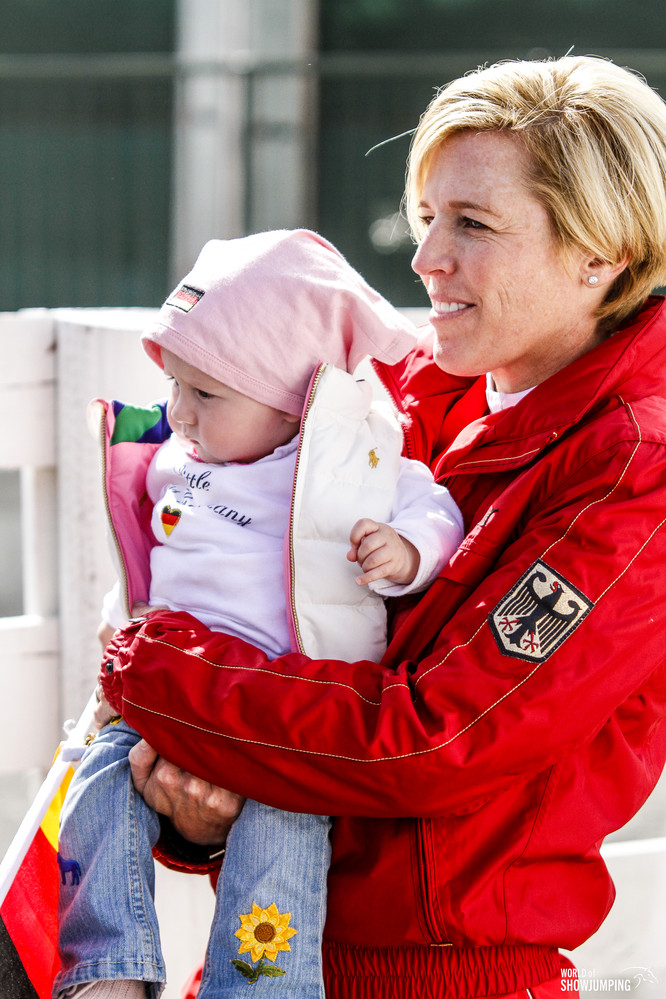 "I knew that there would come a point when I was going to hang up my boots. Basically, that came when it was no longer possible for me to be in two places at once: When school started, I couldn't just take my daughter with me to every horse show," Michaels-Beerbaum says. Photo © Jenny Abrahamsson/WoSJ.
"I knew that there would come a point when I was going to hang up my boots. Basically, that came when it was no longer possible for me to be in two places at once: When school started, I couldn't just take my daughter with me to every horse show," Michaels-Beerbaum says. Photo © Jenny Abrahamsson/WoSJ.
“Once I had my daughter Brianne in 2010, I continued on for some time at the top and she watched me at amazing events, doing big things,” Michaels-Beerbaum recalls about her own career. “As a mother, I won team gold at the 2010 World Equestrian Games in Kentucky, team silver at the 2015 European Championships in Aachen and team bronze at the 2016 Olympic Games in Rio de Janeiro. However, I knew that there would come a point when I was going to hang up my boots. Basically, that came when it was no longer possible for me to be in two places at once: When school started, I couldn't just take my daughter with me to every horse show. I couldn't be a mother and pick her up from school on Friday afternoon and simultaneously be at an international horse show. And I chose to be a mother; that's what I always wanted to do for my daughter.”
The fact that women are the child bearers – and that there is a time limit to it – largely decreases the pool of women
- Meredith Michaels-Beerbaum -
“The fact that women are the child bearers – and that there is a time limit to it – largely decreases the pool of women and I believe this is why men are currently dominating the world ranking,” Michaels-Beerbaum points out.
“That said, there are women who don't have a family, who are great riders and are not trying to raise kids, and still, there's no woman at the top,” Michaels-Beerbaum says. “I think it largely has to do with the backing in terms of horsepower, sponsorship and the travelling.”
To be discussed at the FEI Sports Forum
“As a Federation, we have always been transparent about acknowledging and addressing these gender challenges to the best of our ability,” a FEI spokesperson explained to WoSJ. “At the 2019 FEI Sports Forum, we openly discussed the gender disparities present within our administration and since then we have introduced practices and procedures to raise the number of women on our Committees and the FEI Board.”
It is becoming clear that we need to better understand and research how and where the link is being broken
- FEI spokesperson -
“An informal polling of the community suggests that gender biases in the discipline of Jumping, compounded by female athletes facing the stark choice between pursuing their careers and starting a family, likely contribute to this issue,” the FEI spokesperson continued to explain about the possible reasons behind the underrepresentation of women. “There is the argument to be made that to remain at the top level of Jumping, which has an exceptionally busy calendar, requires an important time and travel commitment compared to the other Olympic disciplines where there are fewer events, and therefore fewer travel commitments. Moreover, emerging discussions are shedding light on the impact of perimenopause and menopause on older female athletes, bringing a crucial but often overlooked aspect into focus. However, it is becoming clear that we need to better understand and research how and where the link is being broken, and why women are not pursuing their career at the top level in Jumping beyond the U25 age category (where they are better represented) as they do in the other disciplines.”
At the upcoming 2024 FEI Sports Forum, session six will be focused on equity in equestrian – assessing gender equality across key roles and levels. The TSS report will be made available on the FEI Sports Forum website in the lead-up to the forum.
Reconciling motherhood and a sports career
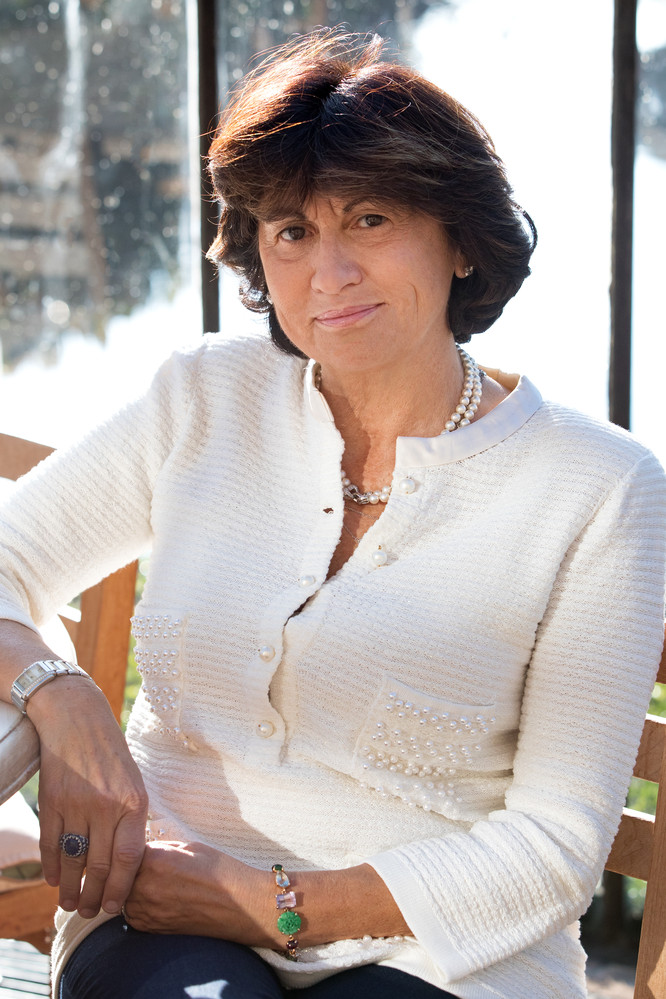 "The change in the share of men and women in equestrian sports in the transition from U25 to senior competitions is closely linked to the difficulty for women to continue to practice sports, and high-level sports in particular, at a time when young families are being created," Eleonora Ottaviani says. Photo © IJRC.
"The change in the share of men and women in equestrian sports in the transition from U25 to senior competitions is closely linked to the difficulty for women to continue to practice sports, and high-level sports in particular, at a time when young families are being created," Eleonora Ottaviani says. Photo © IJRC.
“We believe that if the presence of women in the jumping world’s elite is analysed considering only the FEI Ranking, we would not grasp the real dimension of their competitiveness in our sport,” IJRC Director Eleonora Ottaviani weighs in. “In fact, climbing to the top of this ranking requires riders to be constantly engaged in competitions throughout the year with a good number of horses. In recent years, the number of top-level competitions has increased exponentially and the same holds true for those eligible to obtain the FEI Ranking points. The change in the share of men and women in equestrian sports in the transition from U25 to senior competitions is closely linked to the difficulty for women to continue to practice sports, and high-level sports in particular, at a time when young families are being created. In life in general, and not only in equestrian sports, women are faced with more difficulties than men. In equestrian sports, you must travel a lot, work a lot and make a lot of sacrifices.”
As soon as a woman decides to start a family, this is another element to deal with
- Eleonora Ottaviani -
“As soon as a woman decides to start a family, this is another element to deal with,” Ottaviani continues. “And having a family, women are not able to plan competitions every week as well as men. Mothers-to-be stop riding quite early on for their own safety and that of their child. Then, after their baby is born, it also takes several months for them to return to the top level. All in all, this period easily extends for over a year. A year away from the competitions in a sport context where riders are consistently challenged to chasing points to maintain their place in the world ranking, may heavily weigh on the final results. This is the reality, even though the IJRC has obtained the freezing of the ranking points for female riders during their pregnancy and until their return into the international circuit.” [vi]
“While some athletes have made the radical choice of giving up having children to remain competitive at the highest level, some of the most talented riders of recent decades have nevertheless managed to reconcile their motherhood and their sport career,” Ottaviani concludes. “Not all of them appear at the top of the ranking, but their talent is in no way inferior to mens, for example Laura Kraut, Malin Baryard-Johnsson, Meredith Michaels-Beerbaum, Katharina Offel, Giulia Martinengo Marquet, Angelica Augustsson Zanotelli and Luciana Diniz. There are some very talented young women riders coming up like Jana Wargers, Sophie Hinners and Laura Klaphake, but it will take them some more time to become superstars.”
Not down to luck
“If I was number one for just one month, you could say it was luck, that I had a good horse and that the rest of them were slacking off,” Michaels-Beerbaum says. “I was number one in the world for 24 months. Not consecutive though; there were months once or twice where I moved down to second or third but in total, it was 24 months, which is a lengthy amount of time.”
“It's a very common argument to say that if the women are good enough, they are going to be on top,” she continues. “However, we all know that there are great female riders in the world so that answer doesn't fit for me. It's not about having one great horse either, because other women after me have had a great horse and still not made it to number one. It is extremely difficult: In order to be number one in the world, you need more than one horse, you need consistent riding and you need to perform day in day out. The sport has changed and I really think the fact that there's so many international competitions all over the world which requires so many horses and travel plays into it.”
[i] Jumping - Longines Rankings - N° 279 - 31/03/2024: Tiffany Foster (CAN) (17), Laura Kraut (USA) (23), Jana Wargers (GER) (33), Erynn Ballard (CAN) (41), Lillie Keenan (USA) (43), Amy Millar (CAN) (52), Malin Baryard-Johnson (SWE) (57), Ashlee Bond (ISR) (59), Cathleen Driscoll (USA) (65), Kendra Claricia Brinkop (GER) (71), Penelope Leprevost (FRA) (72), Jeanne Sadran (FRA) (78), Jessica Mendoza (GBR) (83), Natalie Dean (USA) (86), Barbara Schnieper (SUI) (88), Sophie Hinners (GER) (97) and Mimi Gochman (USA) (100).
[ii] Olympic Games from 1964 to 2024: Janou Tissot (FRA), Marion Janice Coakes (GBR), Anne Elizabeth Moore (GBR), Anne Kursinski (USA), Lisa Jacquin (USA), Kathryn Kusner (USA), Marian Kozick (POL), Heidi Robbiani (SUI), Melanie Smith (USA), Leslie Burr-Howard (USA), Lesley McNaught (SUI), Alexandra Ledermann (FRA), Beezie Madden (USA), Malin Baryard-Johnsson (SWE), Laura Kraut (USA), Jill Henselwood (CAN), Christina Liebherr (SUI), Penelope Leprevost (FRA), Lucy Davis (USA), Meredith Michaels-Beerbaum (GER) and Jessica Springsteen (USA).
[iii] European Championships from 1985 to 2024: Heidi Robbiani (SUI), Lesley McNaught (SUI), Alexandra Ledermann (FRA), Alison Bradley (GBR), Meredith Michaels-Beerbaum (GER), Christina Liebherr (SUI), Jessica Kürten (IRL), Malin Baryard-Johnsson (SWE), Helena Lundbäck (SWE), Ellen Whitaker (GBR), Clarissa Crotta (SUI), Janne Friederike Meyer-Zimmerman (GER), Penelope Leprevost (FRA), Angelica Augustsson-Zanotelli (SWE), Janika Sprunger (SUI), Nadja Peter-Steiner (SUI), Amanda Derbyshire (GBR), Simone Blum (GER), Holly Smith (GBR), Wilma Hellström (SWE), Katharina Rhomberg (AUT) and Alessandra Reich (AUT).
[iv] World Championships 1978 to 2024: Caroline Bradley (GBR), Gail Greenough (CAN), Lesley McNaught (SUI), Katharine Burdsall (USA), Katie Monahan (USA), Alexandra Ledermann (FRA), Di Lampard (GBR), Helena Lundbäck (SWE), Malin Baryard-Johnsson (SWE), Beezie Madden (USA), Meredith Michaels-Beerbaum (GER), Laura Kraut (USA), Margie Engle (USA), Janne Friederike Meyer-Zimmerman (GER), Penelope Leprevost (FRA), Judy Ann Melchior (BEL), Lucy Davis (USA), Adrienne Sternlicht (USA), Simone Blum (GER), Laura Klaphake (GER) and Sanne Thijssen (NED).
[v] While the average age for the men within Top 10 is currently 43, the average age for the women ranked within the top 100 is 37.
[vi] A maternity leave for a minimum of six months and a maximum or twelve months, during which the athlete’s ranking points are frozen, can be requested from the FEI.
18.4.2024 No reproduction of any of the content in this article will be accepted without a written permission, all rights reserved © World of Showjumping.com. If copyright violations occur, a penalty fee will apply.



